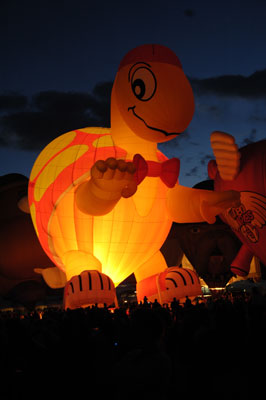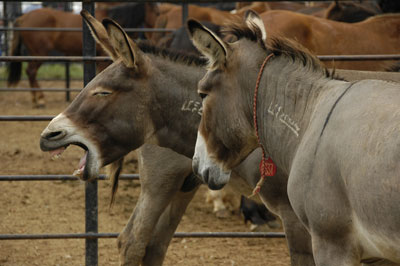As
a homeschooling family, you have the unique opportunity
of being able to take a few weeks off each year to travel,
whether locally or around the world. Why not make the most
of these experiences by creating lesson plans based on your
travels? Not only will you stimulate your child’s interest
in the places you visit, but you’ll also make learning
more enjoyable and productive.
Step
1. Choose a focus. Research your destination and answer
questions such as: How does this destination relate to the
history of our state, country, or world? On what person or
event does this destination focus - historically or in current
events? What topics in science, Bible, art, music, literature,
PE, health, business, etc. can be taught that relate to this
destination?
For example, a field trip to the Oklahoma City National
Memorial in Oklahoma City, Oklahoma, will naturally focus
on the events of 9/11. The focus for a trip to Philadelphia,
Pennsylvania, however, might be narrowed down to a particular
event such as the Underground Railroad, a particular person
such as Benjamin Franklin, or even a particular animal in
the Philadelphia Zoo.
Step
2: Set a time schedule. Decide how long you’ll
spend on the unit and schedule it to be completed just before
the trip begins. Two to three weeks is a good time frame
for a local field trip unit whereas a trip to a large city
may require six weeks or more, depending upon how much you
wish to cover.
As appropriate, replace regularly scheduled schoolwork with
your travel unit. For example, if your unit covers history,
art, music, literature, composition, and science, then substitute
the work in this unit for regular classes in those subjects.
Continue remaining subjects as usual. The
Checklist is an excellent resource for keeping track of travel learning!
Step
3: Write an outline of topics to cover in the time allotted. You can’t do everything! Choose what’s
most important for your children. In addition to academic
skills, consider physical development, spiritual development,
social skills, work ethics, business skills, and character
traits.

A trip to the Albuquerque Balloon Festival, for example,
creates an opportunity to study weather and transportation;
a trip to the Grand Canyon presents the perfect occasion
on which to learn about landforms, rocks, minerals, and creation
science; while a trip to the Wild Horse and Burro Adoption
Center offers a unique opportunity to talk about family values.
Example topic outline for a Grand Canyon unit:
Week 1, Day 1: How the Grand Canyon was formed / creation
Week 1, Day 2: Archaeological digs in Grand Canyon / careers
Week 1, Day 3: Geology of the Grand Canyon / major landforms
Week
1, Day 4: Rock & mineral identification
Week 1, Day 5: Explorers of the Grand Canyon
Week 2, Day 1: Native Americans of the Grand Canyon / missions
Week 2, Day 2: Native plants of the Grand Canyon
Week 2, Day 3: Native animals of the Grand Canyon
Week 2, Day 4: Business skills - running a tour guide service
Week
2, Day 5: Mapping skills - location of Grand Canyon, Arizona, & your
travel route
Step
4: Make a list of resources needed to teach the
unit. Choose a variety of resources to cover all learning
styles including books, hands-on activities, audios, videos,
worksheets, crafts, recipes, games, science labs, and composition
projects. Think “out of the box” when looking for
resources and don’t forget to use the Internet! For
example:
1.
Googol “(the name of a city) and visitor info” to
order travel brochures from visitor centers or a local
Chamber of Commerce. These brochures are excellent resources
for creating posters, brochures, reports, and scrapbooks.
Check for coupons, too!
2.
Googol your topic and add “science,” “craft,” “worksheet,” “quiz,” “online
game,” and “for kids.” For example,
if you Google the words, “Benjamin Franklin crafts
for kids,” you’ll find directions for
making a Ben Franklin stick puppet, a worksheet about
Ben Franklin, a coloring page on Ben Franklin, instructions for
making an almanac, how to make candles from wax, and
how to set up a colonial print shop. “Benjamin
Franklin and quiz” will link to a quiz.
3.
Google your topic and add the word “image.” Images
can be used for school compositions and multi-media projects.
Be sure to obey copyright laws!
4.
Resources like the “Free Old
Time Radio Shows” provide entertaining and
educational audio for your unit. For example, a radio
show called “The Burro That Had
No Name” would be a fun addition for a unit based
on a trip to the Wild Horse and Burro Adoption Center.
5.
Recipes can be found on The
Food Timeline. A recipe
for Hasty Pudding, popular in the early 1700s, makes
a good selection for the Philadelphia unit.
6.
For science supplies, look through science supply catalogs
such as Home
Training Tools and
Timberdoodle.
The
Geology Book by Dr. John Morris, a compass for
hiking, The
Grand Canyon Catastrophe DVD, and a mineral
study kit can useful for the Grand Canyon unit. For
the Balloon Festival unit, try “Balloon
Adventures ,” a hands-on kit for teaching “rocket propulsion,
air pressure, how to build a barometer and a fire extinguisher,
and why the pressure of water can be used to inflate
a balloon.”
,” a hands-on kit for teaching “rocket propulsion,
air pressure, how to build a barometer and a fire extinguisher,
and why the pressure of water can be used to inflate
a balloon.”
7.
Use “hot air balloon” as a search criteria
on Amazon.com and you’ll locate a model hot air
balloon, several books about hot air ballooning and its
history, and even a Boxcar Children’s Mystery called The
Mystery of the Hot Air Balloon!
Step
5: Teach the unit. Begin with a read-aloud. Then, work
together as a family on activities in which everyone can
participate. Finally, assign independent reading, research,
worksheets, and composition projects according to each child’s
ability. Be sure to take pictures of your children doing
hands-on activities.
Sample day for a Wild Horse and Burro Adoption unit:

• Read
Romans 8:23 and talk about adoption. Discuss the mission
of the Wild Horse and Burro Adoption Center. Compare it
to God adopting us into His family.
• Begin
a family read-aloud such as Wild Horses I Have Known by
Hope Ryden or Once upon a Horse: A History of Horses--And How They Shaped Our History
by
Hope Ryden or Once upon a Horse: A History of Horses--And How They Shaped Our History by Suzanne Jurmain.
by Suzanne Jurmain.
• Complete
a hands-on activity. Today’s activity
is assembling a model kit called, “Visible Horse .”
.”
• Assign
independent work according to ability. All but the youngest
children complete an anatomy
worksheet
and a quiz
on the history of the horse.
A child with an interest in horse careers interviews
a stable owner and writes a report of his findings.
The other children write about the horse using thematic
writing paper found on the internet.
• Assign
independent reading such as Brighty of the Grand Canyon by Margaret Henry or Wild Horse
by Margaret Henry or Wild Horse by Sharon Siamon.
by Sharon Siamon.
• Involve
preschoolers by having them color a picture of a horse,
put together a horse puzzle, or listen to you read a picture
book such as My First Horse and Pony Book by Judith Draper.
by Judith Draper.
• After
dinner, the whole family can enjoy the video, Miracle of the White Stallions starring Robert Taylor (1963).
starring Robert Taylor (1963).
Step
6: Go on the trip. Enjoy the day! Because you
have prepared your children so well with the pre-travel
unit, you won’t need to spend time “teaching” as you participate in the activity.
Step
7: Recordkeeping. Francis Bacon cautioned, “When
a traveller returneth home, let him not leave the countries
where he hath travelled altogether behind him.”
Take
time after the trip to discuss how the trip related to
what they learned. Have your children create a Travel Notebook.
Label pictures from the trip and mount on pages in the
notebook. Make a list of books read and place in the notebook.
Add worksheets and composition projects completed. Include
photos of hands-on projects. Bind together into a “book” and
keep in a safe place. You’ll not only have a
record of your children’s work but also a memory
album that can be enjoyed for many years after your family
adventure.
See
my Web site for more
information about field
trips and
a free, Field Trip Unit Planning Guide!
.